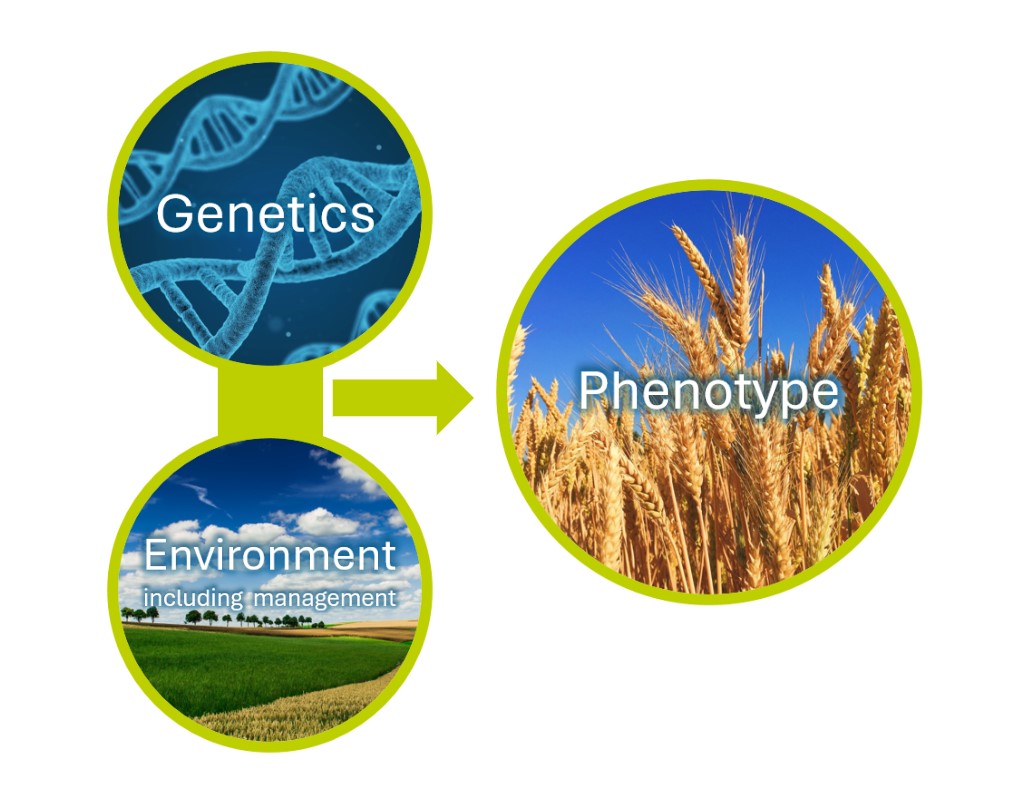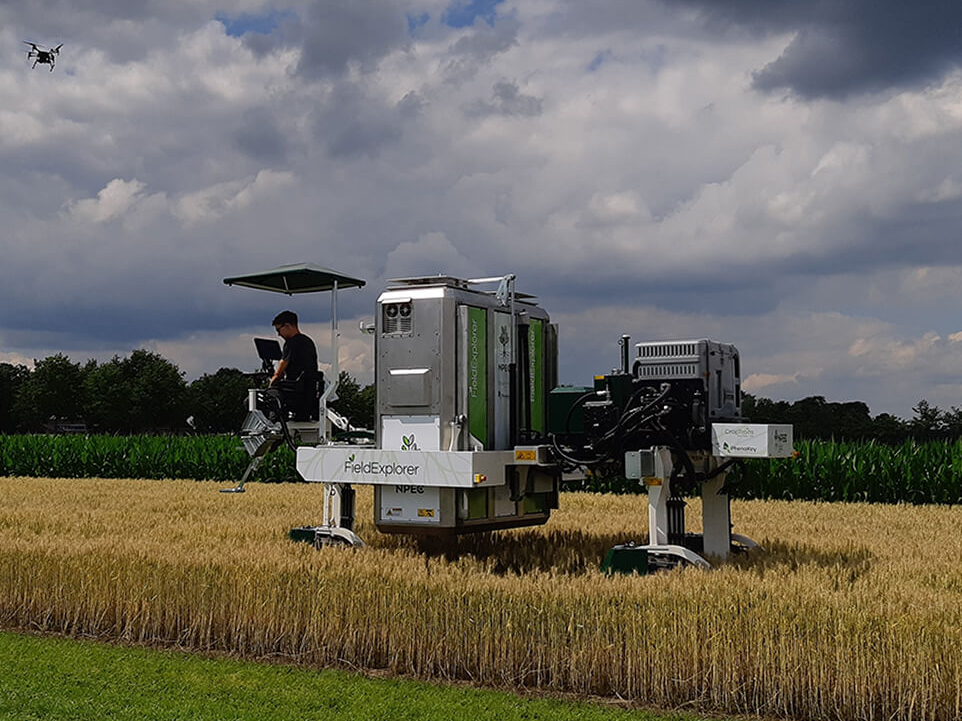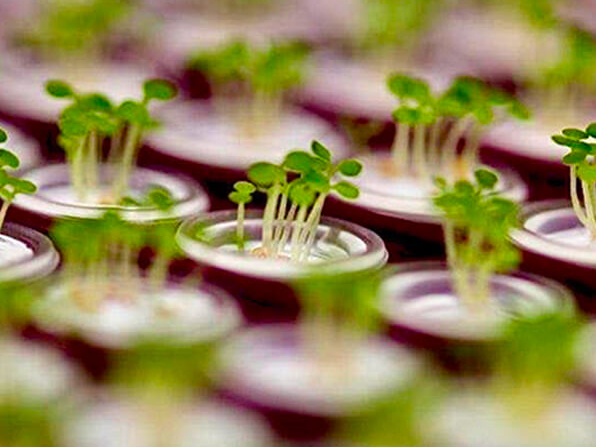What is plant phenotyping?
Plant phenotyping is the process of measuring and analysing how the genotype of a plant interacts with its environment and responds to management practices, to determine its traits and characteristics — appearance, functioning and performance.
Phenotype = Genotype × Environment × Management
Understanding this is critical for
- Breeding climate-resilient, higher-yielding, pest-resistant crops
- Informing sustainable agricultural practices
- Creating high-value plant-based medicines, food and materials
- Selecting and developing plants to foster healthy ecosystems
- Developing crop varieties optimised for innovative production systems


Phenotyping history
The concept of plant phenomics is ancient — farmers have observed their crops for millennia, and researchers have gathered ever more precise data for centuries.
More recently, exciting technological advances have enabled huge progress in the speed, accuracy and versatility of measurement and simulation of growing conditions.
Today, we use sophisticated sensors, cameras, robotics and data analytics to measure the phenotype and the environment, in order to identify the best genotypes and management practices.
Plant phenotyping infrastructures
Advanced plant phenotyping infrastructure provides high-throughput digital technologies that objectively measure and analyse a wide variety of phenotypic markers quickly, objectively and non-destructively.
Sophisticated growth facilities enable specific environmental influences to be isolated, simulated and studied.
With the right equipment and know-how, this can be done across spatial, temporal and biological scales — from controlled environments to field settings, from cellular processes to whole ecosystems, and from short-term experimental cycles to long-term observations.

Watch our video to learn more
Better crops for a sustainable future
Empowering European plant science with cutting-edge phenotyping infrastructure.